The forces of Prussia and Russia (Litharus imagi-nation) squared off to introduce three players to Batailles de l'Ancien Regimes, or B
AR for short. I have played many games at 10:1 figure ratio and 60 figure battalions, but recently was (re)introduced using smaller units. Since my table cannot adequately handle such large formations, all our battalions were either 24 or 30 figures. Cavalry units were 12 figures each.
As an introductory game we each had three brigades of infantry and one of cavalry. The Russians were line and grenadier infantry with cuirassiers, dragoons and horse grenadiers in support. The Prussians had line, fusilier, grenadier, frei korps and jagers. Cuirassiers and hussars were their mounted element and both sides had four light guns.
We rolled off to see who had to place a brigade on the table, one at a time. In the end both sides put their cavalry on their right, so no cavalry duel was forth-coming. Initial deployments looked like this.
 |
| The Prussian right, |
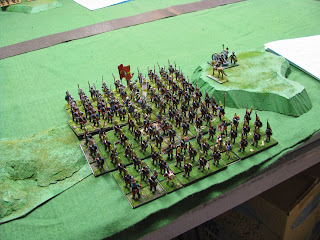 |
| Tight Prussian center brigade. |
 |
| Looking down the Russian line from right to left. |
The Prussians quickly fanned out of their dense formations and formed a double line to face the already deployed Russians.
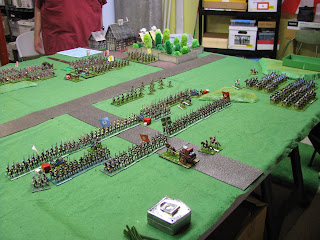 |
| Almost completed forming line of battle. |
 |
| The Prussian far left with my new units. |
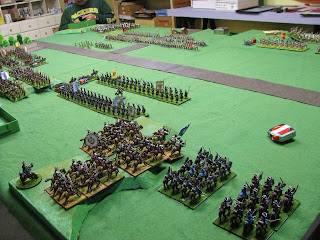 |
| Russian cavalry eyeing targets. |
Battle was joined quickly. A 16" move in line and 40" musket range will do that for you. The Prussian cavalry attempted to flank the Russian line but had the misfortune to face their grenadier brigade. Still, getting on their flank should be worth something, right?
 |
| Early on, looking at the Prussian lines. |
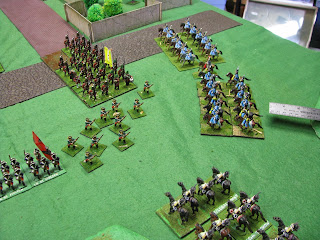 |
| Cavalry maneuvers as Prussian jagers just evade a charge. |
In game terms each side got to move a brigade on the flip of a card. Red for Russian and black for Prussian. And the critical flip....
The Russian cavalry, after initially pausing, began to move forward which forced the Prussians to deploy forward. As both moved towards each other the Prussians took the chance to close the range and get the opening volley bonus. While several Russian cuirassier saddles were emptied, it was fewer than hoped.
Meanwhile on the right the infantry clashed while the Prussian cavalry tested the resolve of the Russian grenadiers. As the day went on one ever-shrinking Russian grenadier battalion repelled four Prussian attempts, which included armored cuirassiers.
Grenadiers crossed bayonets.....
The Russian cavalry crashed into some Prussian grenadiers....
And the infantry lines hammered at each other. Some units broke and were rallied, some artillery were run off, and little movement occurred. A long string of good Prussian saving throws probably saved the center at one point.
Regrettably, with the issue very much in doubt we had to quit. Being the first time for 75% of the players we weren't as fast as normal. However all players came out of the experience having enjoyed it and wanting to play more. Nothing quite matches the visual grandeur of the "big battalion" games but clearly the smaller units work fine for a pleasing and exciting time.
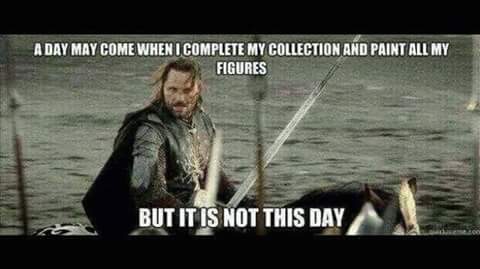
super looking game
ReplyDeleteGreat looking lines of troops!
ReplyDeleteIt sounds like your cavalry units were under strength which could have affected the melee results. In general, I assume a generic strength of 600 soldiers in both infantry battalions and cavalry regiments, so both should be about the same size, rather than having12-figure cavalry units and 24-30 infantry btns.
ReplyDeleteSimply grand!!!!!
ReplyDelete@DAF: The players had 36 cuirassiers and 24 unarmored cav each. They chose to break them down into traditional squadron size. The Russians charged all 36 cuirassiers against the two grenadier battalions so kind of like our traditional sized games.
ReplyDeleteI'm curious, planning my own smaller games again. Did you use fire cards too, or have a brigade do all it's actions on one card?
ReplyDelete